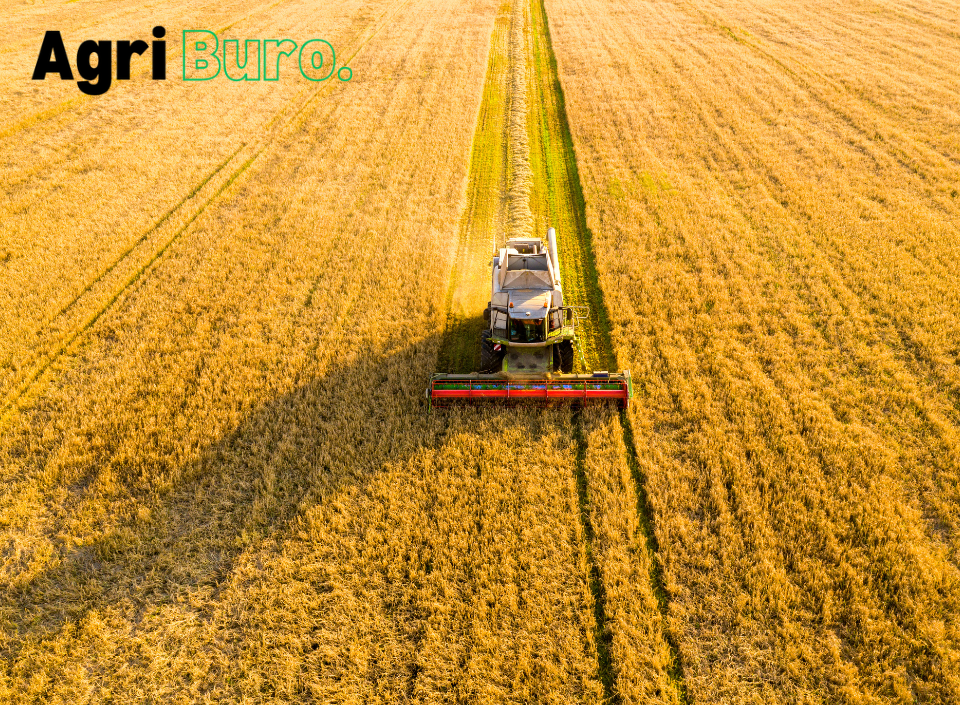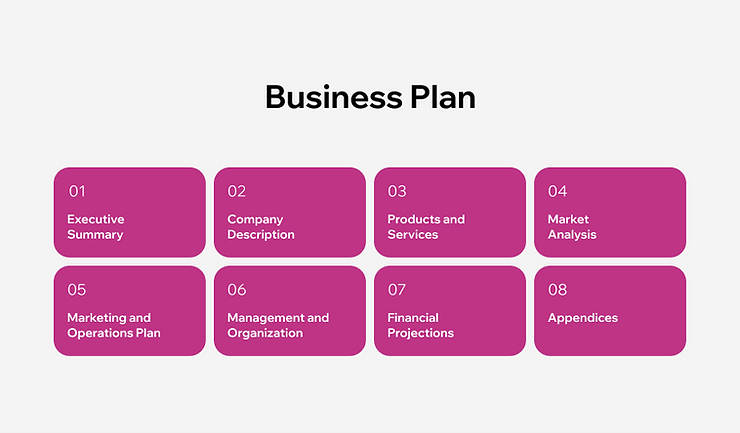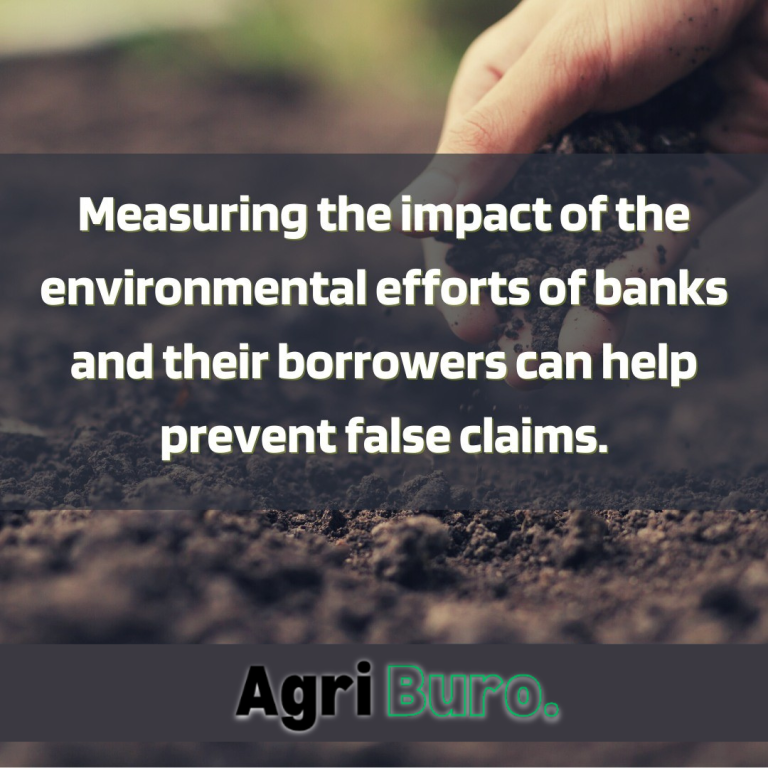If you have a passion for agriculture, a love for the land and a desire to cultivate crops or raise livestock, starting a farming business can be a fulfilling and rewarding venture. In this guide, we’ll walk you through the process of starting a farming business, from developing your concept to creating a professional business website, and provide you with valuable insights to help you make money as a farmer.

What is a farming business?
A farming business involves the cultivation of crops, the raising of animals or a combination of both. This type of business can range from small-scale operations focused on niche markets to large commercial enterprises. Farming businesses can specialize in various areas, including crop production, livestock farming organic farming, aquaculture, horticulture or a combination of these.
What are the most profitable types of farming?
Profitability in farming can vary widely depending on factors such as location, market demand, scale of operation, and management practices. Some of the most widely recognized profitable types include”
- Growing organic fruits, vegetables, and herbs can command premium prices due to increasing consumer demand for healthy and sustainably grown produce.
- Cultivating unique and exotic fruits that are not commonly found in local markets can attract a niche customer base and command a higher sale price.
- Raising fish like tilapia, trout, or catfish can be profitable, especially if you focus on high-quality fish for local markets or restaurants.
- Growing microgreens and sprouts. These young, nutrient-rich plants are popular for their use in salads, sandwiches, and as garnishes in upscale restaurants. Sprouts like alfalfa, mung beans, and broccoli sprouts are nutritious and have a quick growth cycle.
- Agrotourism where you allow customers to pick their own fruits, vegetables, or flowers (see how to start a flower business and how to create a flower business plan) can provide a unique and enjoyable experience while generating revenue.
- Indoor farming which involves using controlled environments and hydroponic systems to grow crops vertically can lead to higher yields and the ability to grow crops year-round.
- Growing grapes for wine production can be profitable if you’re in a suitable climate and have a passion for winemaking.
- Producing craft beverages like craft beer, cider, or specialty teas can also be profitable if there’s a demand in your area.
Remember that successful farming businesses require careful planning, research and a strong understanding of the local market. It’s essential to consider factors such as land availability, climate, water resources, labor costs, and distribution channels before starting any farming venture.
How to start a farming business
Starting a farming business requires careful planning, research and execution. Here are some essential steps to guide you through the process:
- Define your farming business concept
- Conduct market research
- Develop a business plan
- Obtain licenses and certifications
- Secure financing
- Acquire land and necessary
- Implement farming operations
- Establish sales and distribution channels
01. Define your farming business concept
Clarify your vision and identify the specific type of farming business you want to establish. Determine whether you want to focus on crop production, livestock farming organic farming or a combination of these. Consider your interests, expertise, local market demand and available resources when defining your farming business concept.
02. Conduct market research
Thoroughly research your target market, local agricultural conditions and consumer demand. Identify potential customers, distributors or markets for your agricultural products. Evaluate competition, pricing trends and market opportunities to understand the viability and profitability of your farming business.
03. Develop a business plan
Create a comprehensive business plan that outlines your farming business goals, market analysis, competitive landscape, marketing strategies, operational plans and financial projections. Your business plan will serve as a roadmap for your farming business and help you secure financing if needed. Consider including the following sections:
- Executive summary: A concise overview of your farming business concept, mission and key objectives.
- Market analysis: Identify your target market, analyze consumer preferences and assess the competitive landscape.
- Product offering: Describe the specific crops or livestock you will produce and how they meet the needs of your target market.
- Marketing and sales strategy: Outline your marketing and promotional tactics to reach and engage your target audience.
- Operational plan: Detail your farming methods, production processes, equipment needs and staffing requirements.
- Financial projections: Develop a financial forecast, including startup costs, operating expenses, revenue projections and profitability analysis.

04. Obtain licenses and certifications
Register your business and comply with any other licensing and certification requirements for operating a farming business in your area. This process may involve obtaining a business license, relevant permits for agricultural activities and liability insurance to protect against potential risks. Additionally, certain certifications related to sustainable farming practices or organic production may be essential for marketing your farm’s products and gaining consumer trust.
05. Secure financing
Determine the financial resources required to start and operate your farming business. This may include funds for land acquisition or lease, equipment, infrastructure, seeds or livestock, marketing and operational expenses. Explore financing options such as agricultural loans, grants, government programs, business incubators or private investors like angel investors to secure the necessary capital. Check out our helpful guide on how to raise money for your business for more information.
06. Acquire land and necessary
Resources Identify and acquire suitable land for your farming business. Consider factors such as soil quality, water availability, proximity to markets and zoning regulations. If purchasing land is not feasible, explore leasing options or consider partnerships with other landowners. Additionally, secure necessary resources, such as seeds, livestock, equipment and infrastructure based on your farming business plan.
07. Implement farming operations
Establish your farming operations by preparing the land, planting crops, raising livestock and implementing sustainable farming practices. Develop schedules, processes and protocols for irrigation, fertilization, pest control and animal care. Monitor and manage your farming operations closely, adapting to weather conditions and market demands as needed.
08. Establish sales and distribution channels
Identify the most suitable sales and distribution channels for your agricultural products in order to calculate your potential net profit. Explore options such as direct business-to-consumer sales through farmers’ markets, CSA programs, farm stands or online platforms. Consider partnerships with local restaurants, grocery stores or food cooperatives to expand your reach. Improve your networking by developing relationships with distributors or wholesalers if targeting larger markets or supply chains.
Tips for managing a farming business effectively
Effectively managing a farming business is essential for its long-term success. Here are five key steps to manage your farming business effectively:
- Establish clear goals and strategies: Define your short-term and long-term goals for your farming business. Develop strategies and action plans to achieve these goals, considering factors, such as market trends, technological advancements, sustainability practices and financial targets. Regularly review and adapt your strategies to stay competitive and achieve your desired outcomes.
- Monitor and optimize production: Processes Implement efficient production processes to maximize yields, minimize waste and ensure product quality. Regularly monitor and assess key performance indicators like crop yields, livestock health, resource usage and production costs. Utilize technology, data analytics and expert advice to optimize your farming practices and make informed decisions.
- Manage finances and resources: Maintain accurate financial records and implement sound financial management practices. Regularly track your income and expenses, monitor cash flow and ensure compliance with tax obligations, including any corporate tax liability. Efficiently manage resources such as water, energy, fertilizers and feed to minimize waste and optimize resource utilization.
- Invest in infrastructure and technology: Continuously invest in infrastructure, equipment and technology that enhance productivity, efficiency and sustainability. Embrace technological advancements such as precision farming, automated systems, remote sensing or data analytics to improve decision-making, reduce costs and increase overall operational efficiency.
- Stay informed and engage in industry networks: Stay updated with the latest trends, research findings and industry best practices in agriculture. Attend workshops, conferences or seminars to learn from experts and network with other farmers. Join local farming associations, cooperatives or online communities to share knowledge, access resources and advocate for your farming business.
Tips for promoting your farming business
Promoting your farming business effectively is crucial for attracting customers, building brand awareness and increasing sales. Here are five tips to help you promote your farming business successfully:
- Build your brand: What you name your business, your farm logo, your color palette and brand messaging are essential for establishing an effective and cohesive brand. Authenticity and professionalism in your branding across all platforms, including your website, marketing materials and social media, will help establish trust and recognition among potential clients. If you’re looking for some branding help, consider using logo maker and business name generator to get your creative juices flowing. Be sure to check out these farming logo ideas for inspiration.
- Utilize social media platforms: Leverage social media platforms like Facebook, Instagram or YouTube to share visual content, behind-the-scenes glimpses of your farm and educational posts about farming practices. Engage with your audience, respond to comments and messages promptly and build a community around your farming business. Consider running social media contests or collaborations with influencers or local food bloggers to expand your reach.
- Participate in farmers’ markets and local events: Join local farmers’ markets, food festivals or agricultural events to showcase your products and connect with potential customers. Create an attractive booth or display, offer samples and provide educational materials about your farming practices. Engage in conversations with visitors, share your farming story and build relationships with customers and fellow farmers.
- Offer farm tours or workshops: Invite people to visit your farm and experience the farming process firsthand. Organize farm tours, workshops or educational programs for schools, families or community groups. Educate participants about sustainable farming practices, animal welfare or crop cultivation. By providing a memorable and educational experience, you can build trust, loyalty and word-of-mouth referrals.
- Collaborate with local restaurants or chefs: Build relationships with local restaurants, chefs or farm-to-table establishments. Supply them with your fresh produce, meats or dairy products and collaborate on special menu items or farm-to-table events. This partnership not only expands your market reach but also positions your farming business as a trusted source of high-quality ingredients.




